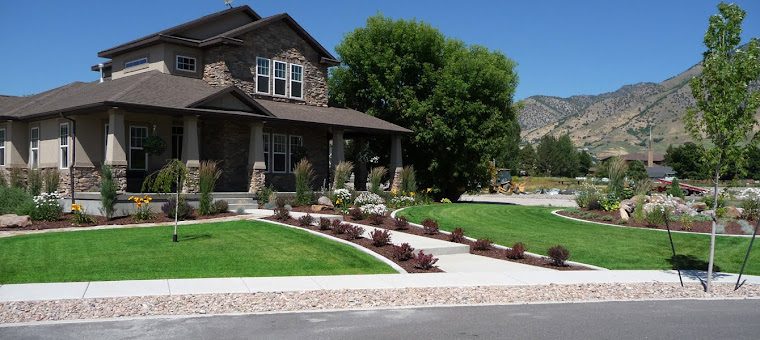
Wednesday, December 30, 2009
2009 ASLA Residential Design Awards

Wednesday, September 30, 2009
The What Goes Where of Good Design.
 Do you think that a designer just sits down and comes up with good stuff right off?
Do you think that a designer just sits down and comes up with good stuff right off?I wish that was the case! More often than not the method of good design is more complex.
Most people who have some background in art know that good design incorporates ideas such as: symmetry, balance, form, color, texture
However those things don't really give you any ideas about what goes where. What most people rarely see is the science that goes into design. Lets just start off with a simple program matrix.
Program Matrix
 A program Matrix is a kind of graph that a designer will use to help them make decisions about what goes where.
A program Matrix is a kind of graph that a designer will use to help them make decisions about what goes where.Down one side is a list of program elements, such as : Barn, Home, Formal Gardens, Courtyard, etc. Then across the top are those same elements listed in reverse. One elements is then judged against the other element in the next column. For example in an adjacency matrix; the home will be judged against the barn. Should these two elements share proximity or is it more desirable if they are farther apart?
Sometimes there is no right answer, however it forces the designer to think about all the details that may have been overlooked if a matrix was not completed.
This matrix then becomes a powerful design tool during the next stage.... Bubble Diagrams!
Rainwater Harvesting
 Research shows that it is possible for a subdivision in our area to harvest enough rainwater to irrigate a sustainably designed landscape, year round; with the possibility of surplus that the city could use for parks and open space. The issue is designing such a system in real space with all the challenges that come with it. Of course it first must be legal.
Research shows that it is possible for a subdivision in our area to harvest enough rainwater to irrigate a sustainably designed landscape, year round; with the possibility of surplus that the city could use for parks and open space. The issue is designing such a system in real space with all the challenges that come with it. Of course it first must be legal. 1.) Concern that the storage of large amounts of rain water will deplete underground aquifers and not allow these aquifers to be recharged naturally.
2.) Concern that the harvesting of rainwater may keep water from reaching streams, rivers and other bodies of water thus harming ecosystems downstream.
3.) There is also concern that these storage areas will become a breeding ground for mosquitoes and other pests. Also that this water may become non potable through some mishap during containment and be misused to the grave misfortune of some unsuspecting victim.
4.) The concern that regulating rainwater harvesting then becomes a burden on the State whom will then have the duty to enforce these regulation, through inspections and investigations of reported unlawful rainwater harvesting activities.
We must first study and address the valid concerns about ground water recharge, and riparian ecosystem decline rainwater harvesting has the potential to affect before we can decide how to approach rainwater harvesting on a large scale in municipalities and in rural areas.
Tuesday, September 29, 2009
Roof Gardens
 During a recent trip to Seattle I saw a roof garden on the Seattle WAMU center roof. This roof garden was designed by Phillips Farevaag Smallenberg. The public was not allowed entry to it, however I managed to get this picture of it from a different skyscraper. A law firm allowed me to enter into their suite to take this picture.
During a recent trip to Seattle I saw a roof garden on the Seattle WAMU center roof. This roof garden was designed by Phillips Farevaag Smallenberg. The public was not allowed entry to it, however I managed to get this picture of it from a different skyscraper. A law firm allowed me to enter into their suite to take this picture.So why roof gardens? Well the answer is simple. Increased greenspace, increased energy efficiency and bragging rights.
This roof garden on the WAMU center won the ASLA 2007 Professional Jury Award . (American Society of Landscape Architects) There are many difficulties when planning for and constructing roof gardens, such as structural engineering. Many roofs can be retrofitted with plant material, however this roof garden features boulders and heavy elements that required foresight and planning. It is hard to appreciate this work from this blog alone for more information visit Flickr where there is a photo pool of WaMu Center Green Roof.
Did you know ASLA did a study on a green roof installed on their building in Washington DC and it lowered the roof's summer temperature 32 degrees compared to a neighboring tarred roof! It was also estimated that ASLA's green roof reduced energy costs by 10%!

